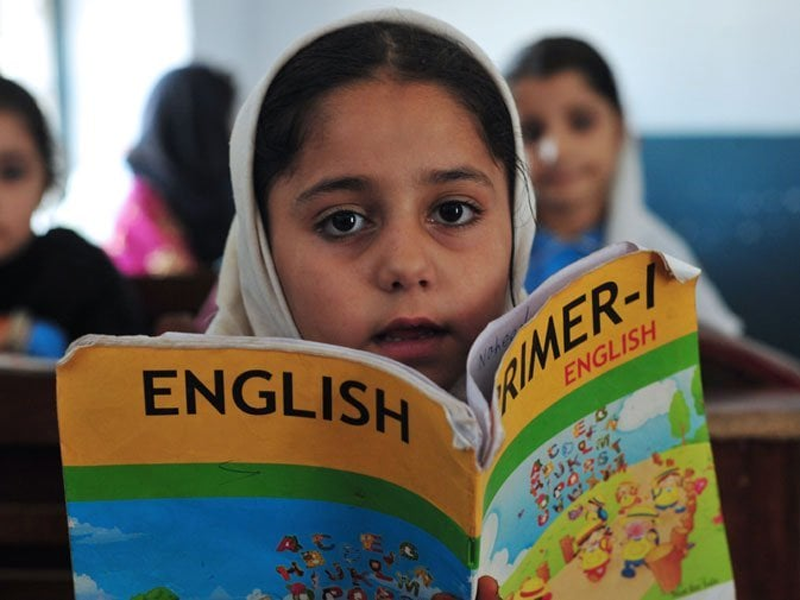Issues, Reforms, and Recommendations
THE STATE OF EDUCATION IN PAKISTAN

- 129
- 0
By Maryam Ahmed
Pakistani education is a complicated, multidimensional problem with many obstacles affecting its overall quality, accessibility, and equity.
An extensive summary of Pakistan's educational situation is provided here, along with information on major problems, current initiatives, and suggestions for future development. Important Concerns with Pakistan's Educational System Education: Enrollment Rates Accessibility: Even though enrollment rates have increased, notably for primary school, a sizable portion of kids-especially girls-remain unenrolled. Over 22 million children are reportedly not attending school, with the majority of the affected areas being rural and areas afflicted by conflict.
Gender Disparity: Girls are less likely than boys to attend school, particularly in rural and conservative areas. This gender gap is a serious problem. Social conventions and culture frequently place a higher value on guys' education than on girls'. Infrastructure: Many schools are devoid of necessities like hygienic restrooms, functional classrooms, and pure drinking water. Enrollment and retention are hampered by inadequate infrastructure, especially for girls. Education's Quality Curriculum and Instructional Approaches: The curriculum is frequently out of date and does not meet current international standards or the demands of the modern economy. Most teaching strategies are rote-based and emphasize memorization over critical thinking and problem-solving abilities. Teacher Quality: There is a dearth of competent educators, and those that are hired frequently lack the necessary resources and drive. This problem is made worse by teacher absenteeism and a dearth of professional development opportunities.
Examination System: The Pakistani examination system is seriously faulty, placing more emphasis on memorization than comprehension and critical thinking. Students' inventiveness and ingenuity are discouraged by this approach. Regional Disparities: The educational performance of the provinces varies greatly; in general, Punjab and Sindh outperform Balochistan and Khyber Pakhtunkhwa. These discrepancies are related to variations in governance, policy implementation, and resource distribution. Social Inequality: There is a distinct separation between public and private education in Pakistan's highly stratified educational system. Due to their costly tuition, private schools are out of reach for the majority of people even though they frequently offer higher education. Special Needs Education: Students with disabilities are excluded from mainstream education due to a lack of facilities and qualified staff. Sustained Reforms in the Education System of Pakistan: Curriculum Revisions The curriculum is being updated and revised by the government to better align it with contemporary international standards. By guaranteeing a uniform curriculum across the nation, the Single National Curriculum (SNC) seeks to lessen differences between various educational systems (public, private, and religious schools). The Professional Development of Teachers Plans are underway to enhance professional development and teacher preparation. Pre-service and in-service training are among them; they emphasize the use of technology in the classroom, subject matter expertise, and contemporary teaching approaches. Technology Use in Education The government has been pushing the use of technology in education in coordination with partners in the corporate sector. This includes giving teachers and students access to computers and tablets, as well as digital classrooms and online learning environments.
Collaborative-Private Alliances The government has been working more and more with the private sector to enhance school administration, infrastructure, and resource allocation in order to address the problems of access and quality. Greater Allotment to the Budget The budgetary allotment for education has gradually increased, yet it still falls short of the suggested 4% of GDP. The administration is working to raise money, especially for teacher pay and infrastructure improvements. Suggestions for Development: Boost Education Investment At least 4-5% of GDP should go into education, with the government making sure the money is used effectively and openly. Infrastructure, teacher pay, and educational materials all need to be improved, and this requires more funding. Enhance Programs for Teacher Training Nationwide implementation of comprehensive teacher training programs with an emphasis on pre-service and in-service training is necessary. Modern teaching approaches, classroom management, and subject matter expertise should be prioritized. Restructure the Exam System Exam System Reform Critical thinking, problem-solving, and knowledge application should be given priority in the examination system. This can be accomplished by lowering the dependence on stressful final exams and implementing ongoing assessment Advance Gender Parity in the Classroom It is important to launch targeted programs to support girls' school enrollment and retention. This can entail offering scholarships, constructing additional schools for girls, and spreading the word about the value of an education for girls.
Increase Education Accessibility in Underserved and Rural Areas Building additional schools, enhancing transportation, and offering incentives to educators to work in remote and conflict-affected communities are all ways to show special attention to these places. Strengthen Accountability and Governance in Education It is imperative to enhance the governance and accountability frameworks in the education system. This entails frequent observation of educational institutions, open administration of financial resources, and community participation in decision- Put an emphasis on inclusive education Education should be made more inclusive by the integration of students with disabilities into regular classrooms, the provision of required resources, and the training of special education teachers. Strengthen Public-Private Collaborations Increasing the promotion of public-private partnerships can aid in bringing in new teaching techniques, upgrading infrastructure, and running schools more efficiently. In summary There are a variety of opportunities and challenges associated with Pakistan's educational system. Even while there has been some progress, much more needs to be done to guarantee that every kid in Pakistan has access to a high-quality education. Through focused changes and greater funding, Pakistan can address the main problems and create an education system that is more effective and equitable while also serving the demands of the country's diverse population.

















































